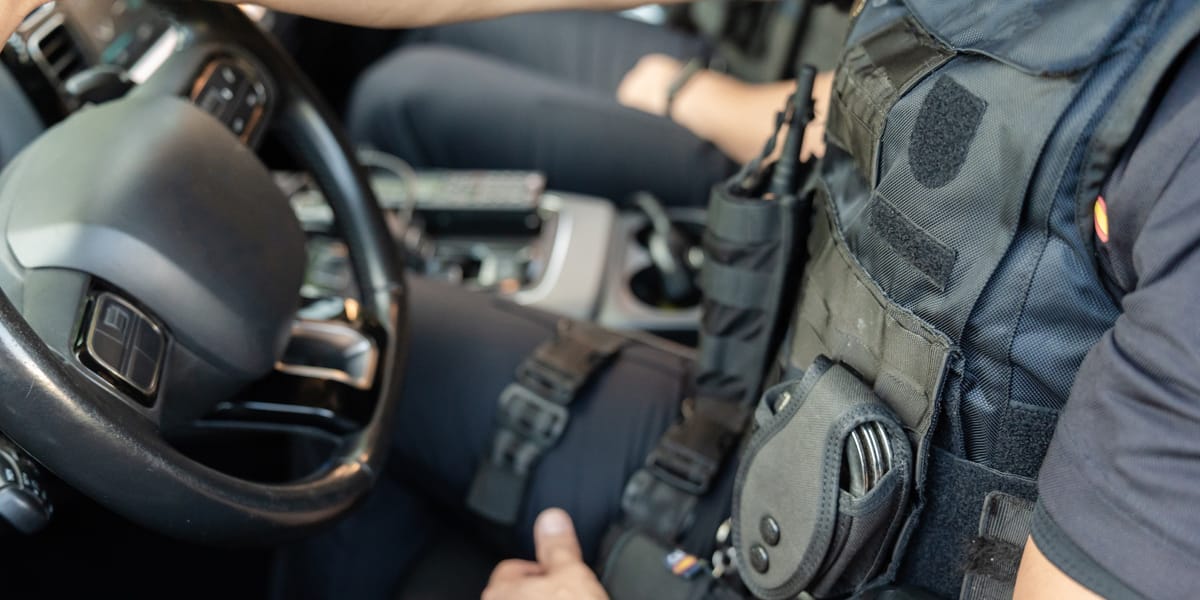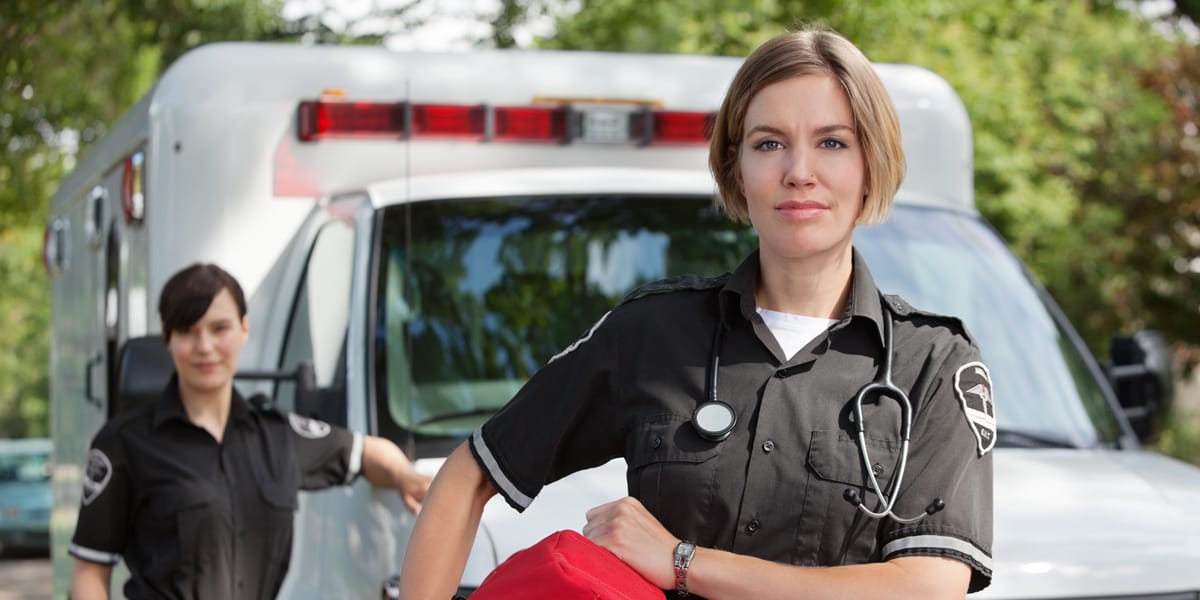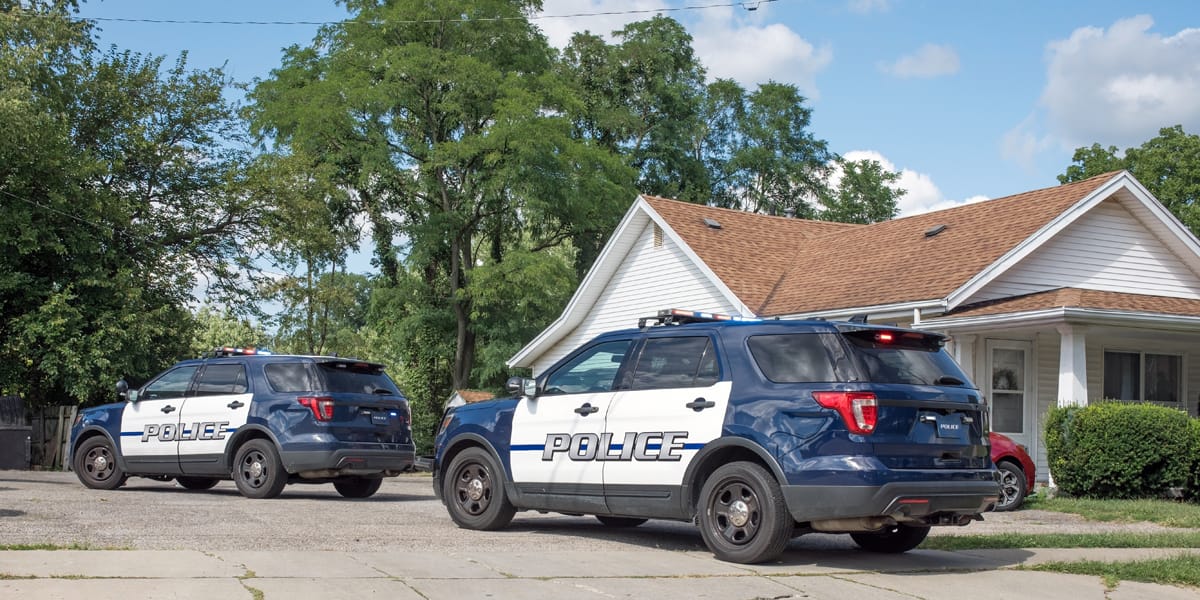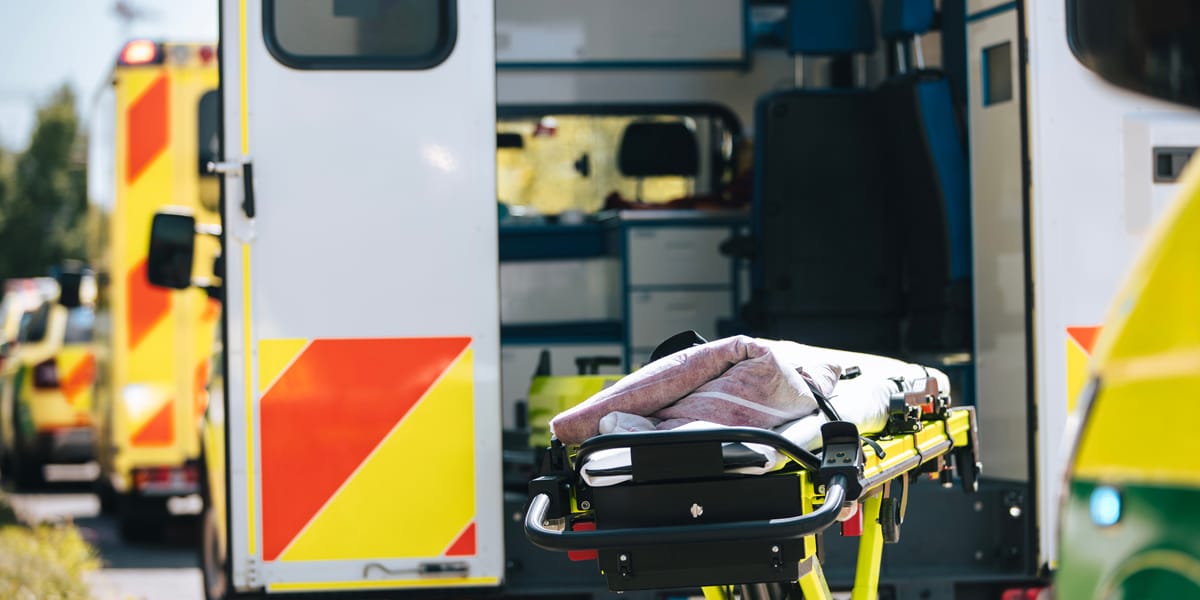
Police cruisers, transport vans, K9 units—law enforcement vehicles aren’t just cars. They’re mobile workstations, holding cells, and lifelines for the officers inside. Every shift brings new and unpredictable challenges, and with those challenges come unseen risks.
From transporting injured individuals to responding to drug-related incidents, squad cars often carry more than their occupants. They carry invisible hazards that don’t disappear when the call is over.
Without professional decontamination, those vehicles can become a dangerous environment for officers, detainees, and anyone else who enters.

Every day, law enforcement vehicles are exposed to situations that most people never imagine. While they might look clean from the outside, the reality is that these vehicles often carry invisible hazards that ordinary cleaning can’t erase. These dangers are far from everyday dirt or dust—they’re biohazards with the potential to harm anyone who steps inside.
Blood, vomit, urine, and other fluids often end up in the back seat or on floor mats after incidents involving injuries, illness, or altercations. These fluids aren’t just unpleasant—they can carry dangerous pathogens like HIV, Hepatitis B and C, and MRSA.
Once absorbed into porous materials, such as upholstery or seatbelts, they can linger undetected, putting officers and detainees at risk long after the original incident.
Encounters with narcotics bring another serious threat. Even microscopic traces of substances like fentanyl, heroin, or methamphetamine can remain on surfaces. These residues are invisible to the naked eye, but they can cause severe health effects if inhaled, touched, or transferred onto other objects.
Officers reaching for a seatbelt or resting an arm on a door panel could unknowingly expose themselves to life-threatening toxins.
When detainees or passengers carry contagious illnesses—whether the seasonal flu, tuberculosis, or COVID-19—those pathogens don’t disappear when they leave the vehicle.
Viruses and bacteria can settle on frequently touched surfaces such as door handles, seatbacks, or partitions, and can also circulate through HVAC systems.
Without proper decontamination, officers may breathe in these invisible threats every time the air conditioning or heater is turned on.
One of the most dangerous surprises in law enforcement vehicles comes from what’s left behind. Used needles, razor blades, or contaminated personal belongings can be hidden under seats, stuffed into seat crevices, or tucked inside door pockets.
These items pose a high risk of accidental cuts or punctures that can transmit bloodborne pathogens. Even routine maintenance or vehicle cleaning can become hazardous if sharps are overlooked.
These threats extend far beyond the vehicle itself. They don’t just endanger the officer behind the wheel—they also put detainees, mechanics, custodial staff, and even family members at risk if contaminants are carried home on clothing or gear.
Without specialized biohazard decontamination, a squad car can quickly turn from a tool of protection into a source of harm.

At first glance, wiping down hard surfaces, spraying disinfectant, or running a vacuum should be enough to keep a squad car clean. However, when it comes to biohazards, appearance can be deceiving.
Law enforcement vehicles aren’t just dirty—they’re contaminated. And contamination requires much more than a surface-level wipe. Here’s why DIY or in-house cleaning often leaves critical risks behind:
Most pathogens and drug residues can’t be seen with the naked eye. A seat may look spotless but still harbor microscopic traces of Hepatitis, MRSA, or fentanyl dust. Standard cleaners may remove visible stains, but they aren’t designed to neutralize high-risk biohazards at a molecular level.
This means vehicles can appear “clean” while still posing serious health risks every time someone steps inside.
Squad cars are full of porous surfaces—seatbelts, upholstery, fabric flooring, even foam padding—that readily absorb bodily fluids and bacteria. Once contaminants seep in, they don’t simply wipe away.
Household cleaners can’t penetrate deep into these materials, leaving behind hidden reservoirs of pathogens that may linger for weeks or months. Over time, even a small spill can spread contamination throughout the vehicle.
Even if fluids or sharps are removed, what happens next matters. Tossing blood-soaked rags, contaminated gloves, or used needles into regular trash creates serious risks for custodial staff, mechanics, and sanitation workers.
Without certified biohazard disposal protocols, one person’s “cleanup” becomes another person’s dangerous exposure. Mishandling of this waste can also result in costly regulatory violations.
Officers or maintenance staff attempting DIY cleaning rarely have access to proper personal protective equipment (PPE). Without respirators, puncture-resistant gloves, or hazmat suits, they are left vulnerable to skin contact, needle sticks, or inhalation of airborne particles. The attempt to clean may actually increase exposure for the person doing the work.
Vehicle interiors are compact, layered, and complex. Fluids seep between seat crevices, drug powder drifts into vents, and pathogens circulate through HVAC systems. A spray bottle and rag simply can’t reach these hidden zones.
Without specialized equipment and techniques, these areas remain untreated, allowing contaminants to spread each time the vehicle is used.
The bottom line: what looks clean may still be hazardous. Standard cleaning methods can make surfaces look presentable, but they can’t guarantee that invisible, high-risk contaminants are gone. Only professional biohazard remediation ensures that every inch of the vehicle—from visible surfaces to hidden crevices—is truly safe for officers, detainees, and the community.
| DIY / In-House Cleaning | Bio-One Professional Decontamination |
| Uses household or automotive cleaners not designed for biohazards. | Uses medical-grade disinfectants that neutralize pathogens and drug residues at a molecular level. |
| Focuses on visible dirt and stains. | Targets both visible and invisible contaminants, including bloodborne pathogens and fentanyl dust. |
| Limited reach—seat crevices, HVAC systems, and porous materials often remain contaminated. | Specialized equipment cleans deep into upholstery, vents, and hidden spaces. |
| No certified biohazard disposal—waste is often discarded improperly, creating new risks. | OSHA-compliant disposal of sharps, fluids, and contaminated materials prevents secondary exposure. |
| Performed by untrained staff without proper PPE, increasing exposure risk. | Trained technicians with full protective gear handle every step safely and discreetly. |
| Vehicles may appear clean but remain hazardous. | Vehicles are restored to a safe, sanitary state—ready for service without hidden dangers. |

Every law enforcement vehicle tells a story—one of fast responses, high-pressure calls, and unpredictable encounters. With so much at stake, “clean” isn’t good enough. Vehicles must be safe. That’s where Bio-One steps in.
Our vehicle decontamination service is specifically designed to address the unique risks faced by law enforcement officers. We don’t just wipe surfaces or mask odors—we restore vehicles to a truly safe state, using proven biohazard remediation protocols designed for high-risk environments.
Here’s what professional decontamination with Bio-One looks like:
We use hospital-grade disinfectants formulated to neutralize viruses, bacteria, and drug residues at the molecular level. These cleaners eliminate pathogens like Hepatitis, HIV, or MRSA, and render narcotics like fentanyl and methamphetamine harmless—far beyond the capabilities of over-the-counter products.
Contaminants don’t always stay where they’re visible. Fluids seep into seat crevices, powder drifts into HVAC vents, and pathogens cling to hard-to-reach corners. Our technicians utilize professional-grade tools and technology to target and sanitize these areas, ensuring that no hidden hazards remain.
Removing contaminants is only half the job. The other half is disposing of them safely. Our team follows strict OSHA and EPA guidelines to handle and transport biohazardous waste—whether it’s sharps, blood-soaked materials, or contaminated items—ensuring that nothing poses a risk to custodial staff, waste handlers, or the community.
Unpleasant odors often indicate more severe contamination. Instead of masking smells with air fresheners, we trace odors to their origin—whether it’s fluids trapped in upholstery or residue in ventilation systems—and remove the hazard completely. The result: vehicles that smell clean because they are, in fact, clean.
We know every squad car is essential to department readiness. That’s why our processes are both thorough and efficient. Vehicles are decontaminated quickly without cutting corners, allowing them to return to service safely, often within hours.
When Bio-One decontaminates a law enforcement vehicle, officers can trust they’re stepping into a safe environment, detainees are transported without unnecessary risk, and communities know their departments are protecting not only public safety but also the health of those who serve.

Skipping or delaying proper vehicle decontamination isn’t just about appearances—it carries serious consequences that ripple across the department. What may seem like a minor oversight can quickly turn into a health emergency, a lawsuit, or a disruption in daily operations.
Every ride in a contaminated vehicle puts officers, detainees, and even support staff at risk. Pathogens like HIV, Hepatitis B, or MRSA can survive on surfaces for days or even weeks. A forgotten trace of fentanyl dust can be inhaled or absorbed through the skin, leading to accidental overdose. Even something as simple as adjusting a seatbelt could expose an officer to dangerous bacteria if bodily fluids have seeped into the fibers. Over time, repeated exposure can take a toll on an officer's health, leading to sick leave, long-term illness, or worse.
If a detainee contracts an illness or an officer experiences accidental exposure because of an improperly cleaned squad car, the department could face serious legal consequences.
Lawsuits alleging negligence, unsafe working conditions, or failure to follow biohazard protocols can not only result in financial settlements but also damage community trust. Workers’ compensation claims from exposed officers and regulatory fines for improper disposal practices can further strain budgets and reputations.
When vehicles are pulled from service unexpectedly due to contamination, departments lose vital resources. Fewer vehicles on the road mean longer response times and increased strain on the remaining fleet.
What could have been a fast, scheduled professional decontamination turns into extended downtime, costly repairs, or even replacement of contaminated vehicle components. In high-demand environments, even a single cruiser out of service can disrupt patrol schedules, emergency responses, and community coverage.
The bottom line: ignoring vehicle biohazards isn’t just risky—it’s costly, both in human terms and operational efficiency.
By investing in professional decontamination:
Professional cleanup isn’t a luxury—it’s a necessity that allows officers to do their jobs with confidence, knowing the space they work in every day is safe.
When officers call us, it’s because the stakes are high. A contaminated vehicle isn’t just an inconvenience—it’s a health risk, a liability, and a barrier to doing the job safely. That’s why departments across the country rely on Bio-One. We bring not only technical expertise but also an understanding of the sensitivity and urgency behind every call.
Our crews aren’t general cleaners—they’re certified biohazard remediation professionals. Every technician is trained in bloodborne pathogen handling, trauma cleanup, and the safe decontamination of drug residues like fentanyl and methamphetamine. This training ensures that when we step into a squad car, we know exactly how to neutralize risks and restore safety without guesswork.
We recognize that law enforcement work is already in the public eye. That’s why our teams operate with total discretion. We arrive in unmarked vehicles, use plain uniforms, and work quietly so cleanup doesn’t draw unwanted attention. For officers, detainees, and the community, that privacy matters—it keeps sensitive situations from becoming public issues.
Emergencies don’t wait, and neither do we. Bio-One is available 24/7 with local teams ready to respond at a moment’s notice. Whether it’s a single contaminated cruiser after an altercation or multiple vehicles needing decontamination following a large event, we’re equipped to handle the job quickly. The faster we respond, the sooner vehicles are back in service, protecting the community.
No two departments—or incidents—are the same. Some need a one-time deep decontamination after a high-risk encounter, while others benefit from scheduled fleet maintenance to keep vehicles consistently safe. Bio-One collaborates with each department to develop solutions tailored to their operational needs and budgets. Our flexibility ensures agencies always get the right level of support.
Behind every cleanup is a human story. Whether it’s an injured detainee, an officer exposed to risk, or a family impacted by tragedy, we never lose sight of the people involved. Our technicians approach every vehicle with care, respect, and empathy, because restoring safety isn’t just about sanitizing surfaces—it’s about protecting the lives and dignity of those who rely on these vehicles every day.
For law enforcement, trust is everything. Bio-One has earned that trust by showing up fast, working with precision, and honoring the responsibility that comes with cleaning the spaces officers depend on. When the call comes, agencies know they’re not just getting cleaners—they’re getting a partner dedicated to keeping their teams, detainees, and communities safe.
First Responders Month is a powerful reminder of the risks law enforcement officers face every single day. While they work to protect our communities, Bio-One is here to protect them—ensuring the vehicles they depend on remain safe, sanitized, and ready for service.
Because when the shift ends, every officer deserves to go home healthy. And every detainee, technician, and passenger deserves a vehicle free of hidden hazards.
When safety is at stake, don’t leave it to chance. Bio-One offers professional squad car decontamination, keeping your fleet ready and your personnel protected.
Protect your officers. Protect your fleet. Protect your community.
Because squad cars aren’t just dirty—they’re contaminated. Biohazards like blood, vomit, fentanyl residue, or airborne pathogens require medical-grade cleaning agents and specialized equipment that standard cleaning products can’t match.
Common risks include bodily fluids (blood, vomit, urine), microscopic drug residues (such as fentanyl or methamphetamine), airborne pathogens (like influenza, TB, or COVID-19), and sharps or hidden items left behind after transport.
Some viruses and bacteria can live on surfaces for days or weeks. Drug particles like fentanyl remain dangerous indefinitely until they are professionally neutralized.
DIY cleaning removes surface dirt, but contaminants absorbed into upholstery, seatbelts, or HVAC systems remain untreated. Vehicles can appear clean while still harboring invisible hazards.
Officers risk accidental overdose from fentanyl exposure, infections from bloodborne pathogens, or respiratory illness from airborne viruses. Repeated exposure can lead to long-term health issues and missed work.
Yes. Detainees, technicians, custodial staff, and even officers’ family members can be exposed if hazards are carried on clothing, equipment, or skin.
Bio-One follows OSHA and EPA guidelines for certified handling and disposal. Sharps, contaminated fabrics, and waste are collected, packaged, and disposed of through approved biohazard channels—keeping staff and the public safe.
Most decontaminations are completed within hours. Our goal is to minimize downtime while ensuring that vehicles are thoroughly safe before returning to the road.
Absolutely. We offer one-time cleanings for urgent needs as well as scheduled fleet maintenance programs that keep vehicles consistently safe and compliant.
Bio-One technicians are certified biohazard specialists, not general cleaners. We arrive discreetly in unmarked vehicles, respond 24/7, and bring both compassion and technical expertise. Our focus is on restoring vehicles to a safe state while protecting the officers and communities who rely on them.



